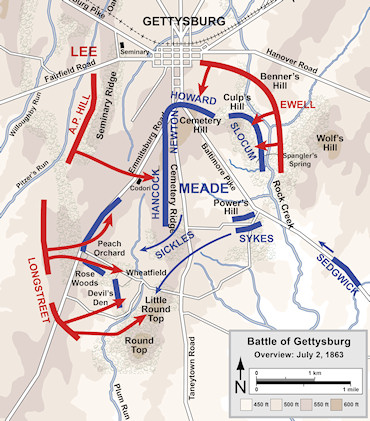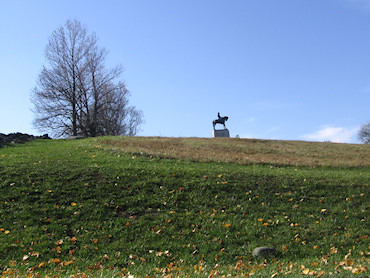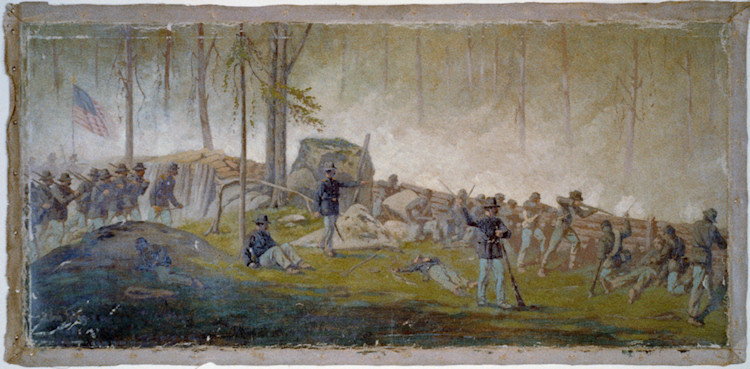Culp’s Hill and Cemetery Hill

Source: Map by Hal Jespersen, www.cwmaps.com. Used under a Creative Commons Attribution 3.0 license.
A Long Night
The Union army retreated to Cemetery Hill, Culp’s Hill, and Cemetery ridge in the late afternoon after the first day’s fighting. They spent the night and much of the second day building defenses.
In the evening on the second day of fighting, Confederate Lieutenant General Richard Ewell’s forces attacked Union forces on Culp’s Hill, following an earlier artillery barrage. The Confederate forces occupied the lower part of Culp’s Hill, but could make no more progress before nightfall.
Although there was only a single Union brigade on Culp’s Hill, the strong defenses helped them defend their position. In addition, the darkness prevented the Confederates from determining the size of the force they faced. Had they realized how few Union troops they faced, perhaps they would have pressed the attack. But during the night, the Union was able to bring reinforcements to Culp’s Hill.

Cemetery Hill, viewed from the bottom. Note how steep the slope is. Union cannon were not able to point down far enough to fire on enemy troops. Source: ©2008 by Joshua Sherurcij. Used by permission.
Meanwhile, two Confederate brigades attacked Cemetery Hill as dusk fell. During their approach, they were exposed to heavy fire from a large number of Union cannons positioned on the hill. However, as they drew closer, the cannons were unable to lower their barrels enough due to the steepness of the hill, and the Confederates were able to overwhelm one brigade. Nearby Union soldiers were sent to push back the Confederates, but that created a gap in another part of the line. A Confederate brigade led by Brigadier General Harry T. Hays rushed through and captured some of the Union artillery. However, he became confused in the dark and was unsure which units were Confederate units and which were Union units. Hays was forced to retreat.
Though there was little fighting during the night, both sides held their positions and brought in reinforcements. At dawn on the third day, fighting resumed and continued almost until noon. Despite numerous attacks and counterattacks, the Union position proved to be too strong, and the Confederates were finally forced from their position on Culp’s Hill.
The painting below shows an example of the defenses the Union troops built on Culp’s Hill.

Source: Painting by Edwin Forbes (1870). Scene behind the breastworks on Culps Hill, morning of July 3rd 1862. Public domain.
Questions
- What advantages did the Union have in the fight on Culp’s Hill and Cemetery Hill?
- How was the steepness of Cemetery Hill both an advantage and a disadvantage for the Union?
- How might the battle have been different if the Confederates had started their attack earlier in the day?

